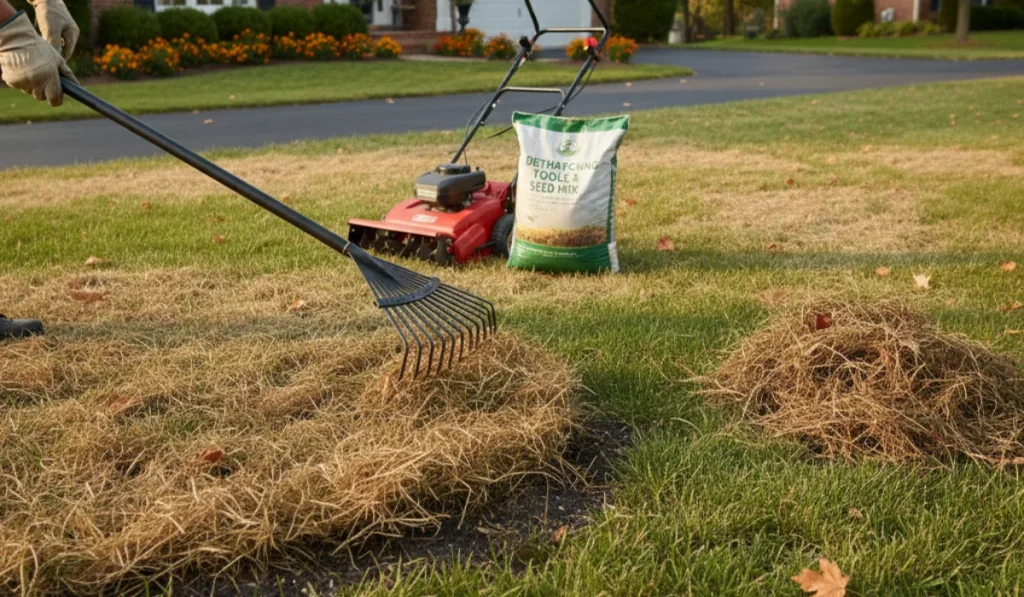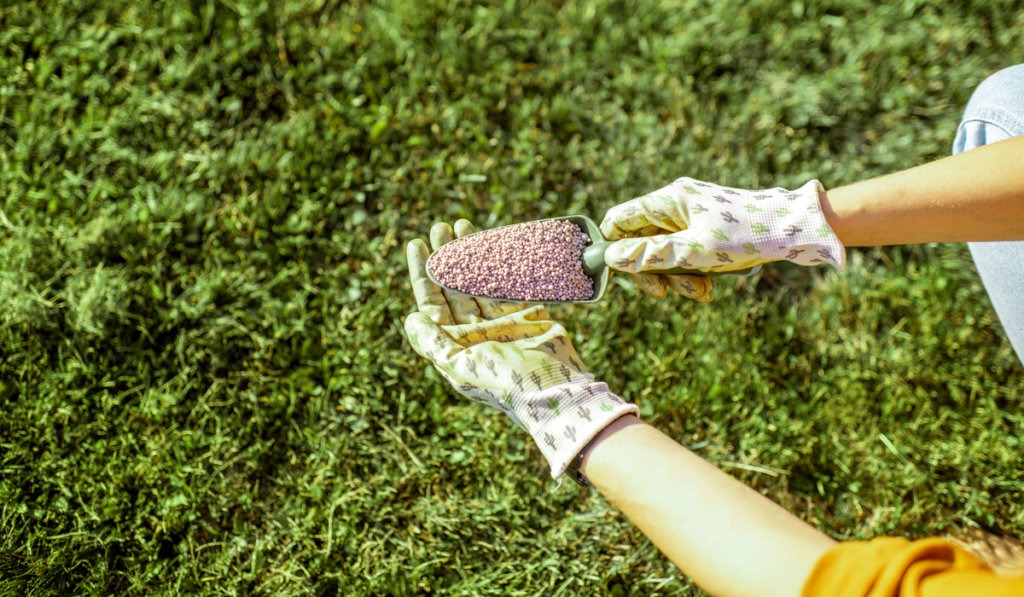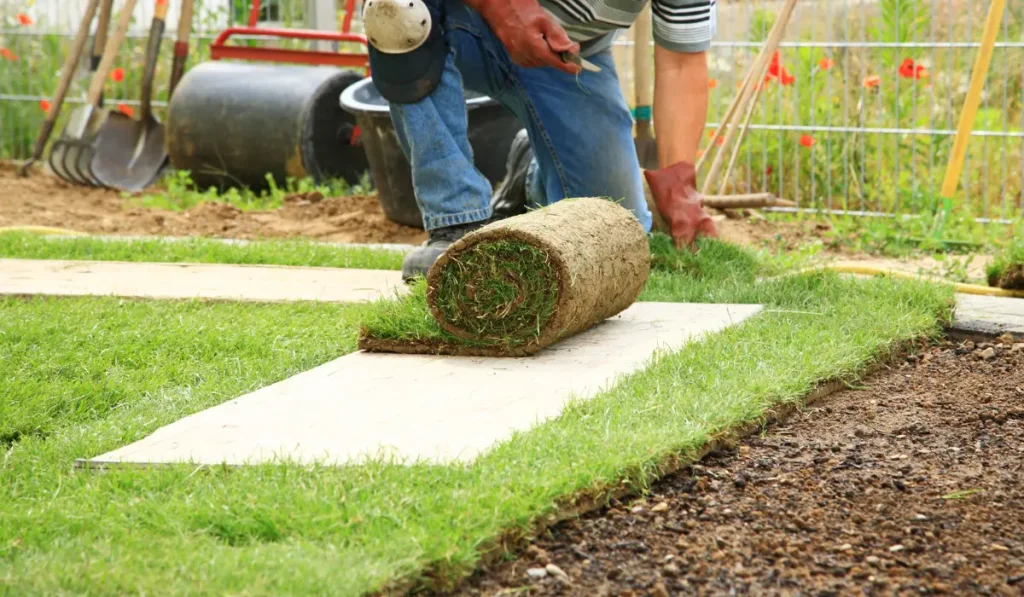Dealing with lawn fungus can be frustrating for homeowners, but understanding how to treat it and keep your lawn healthy will make a difference. From brown patches to powdery mildew, fungal diseases can disrupt your goal of a green lawn. Luckily, with the right approach, you can tackle the problem head-on.
Let’s explore how to treat lawn fungus and maintain a vibrant yard.
Key Takeaways
- Identifying lawn fungus by spotting issues like brown patches or red threads helps start the right treatment.
- Fixing root causes like overwatering and poor drainage creates a lawn environment that’s less friendly to fungus.
- Treating fungal infections with fungicides, baking soda solutions, or neem oil can restore your lawn’s health.
- Keeping up with smart lawn care, like proper mowing and watering, protects your yard from future fungus problems.
Identify the Fungal Infection in Your Lawn
The first step to treating lawn fungus is recognizing the specific issues or pathogens. Some common types of fungus include:
| Common Types of Fungus | Description |
|---|---|
|
Brown Patch
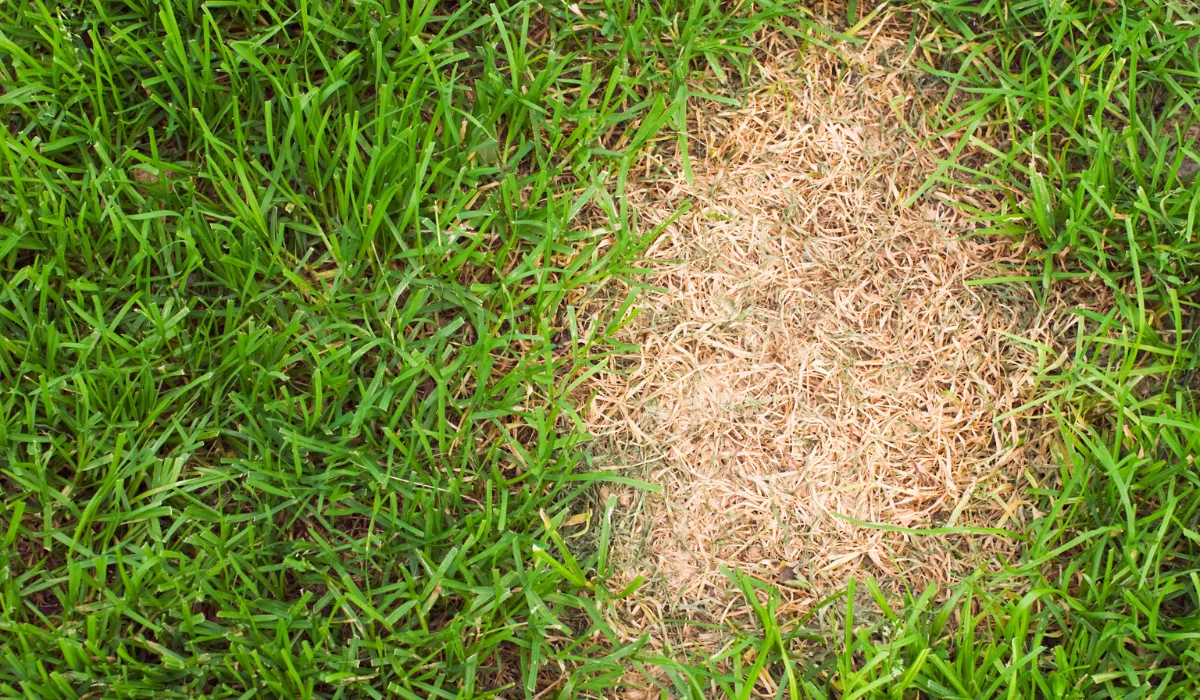
|
Creates circular brown spots, especially in high humidity. |
|
Dollar Spot
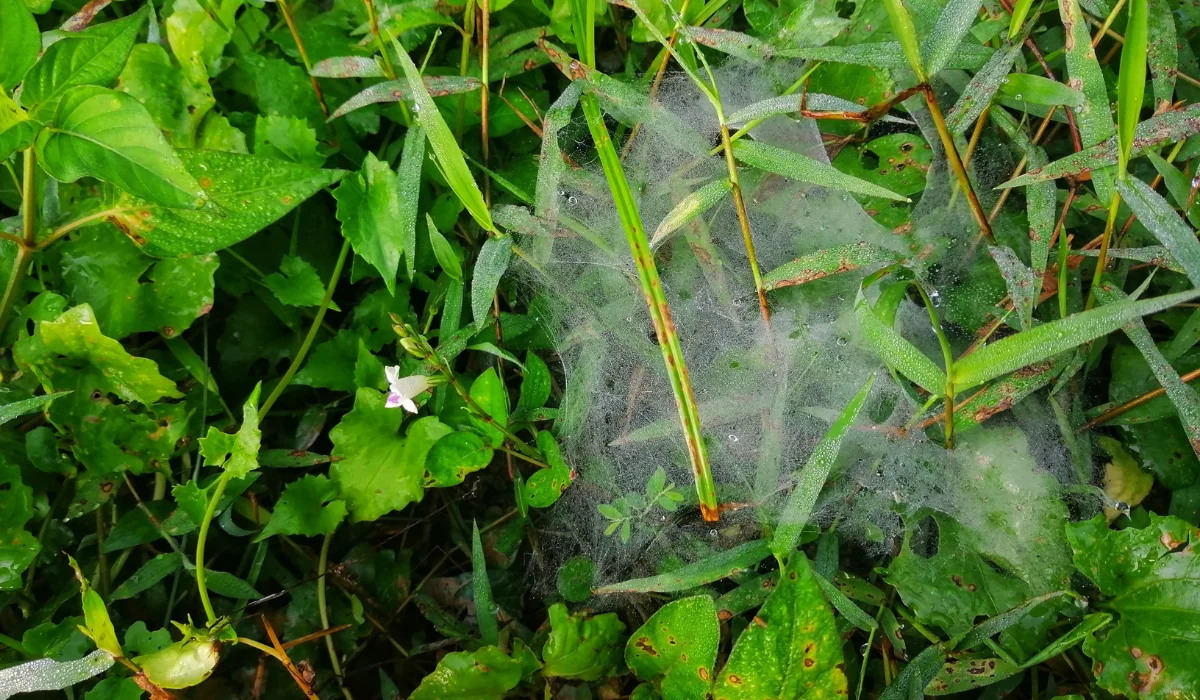
|
Produces small, straw-colored spots on blades of grass. |
|
Red Thread
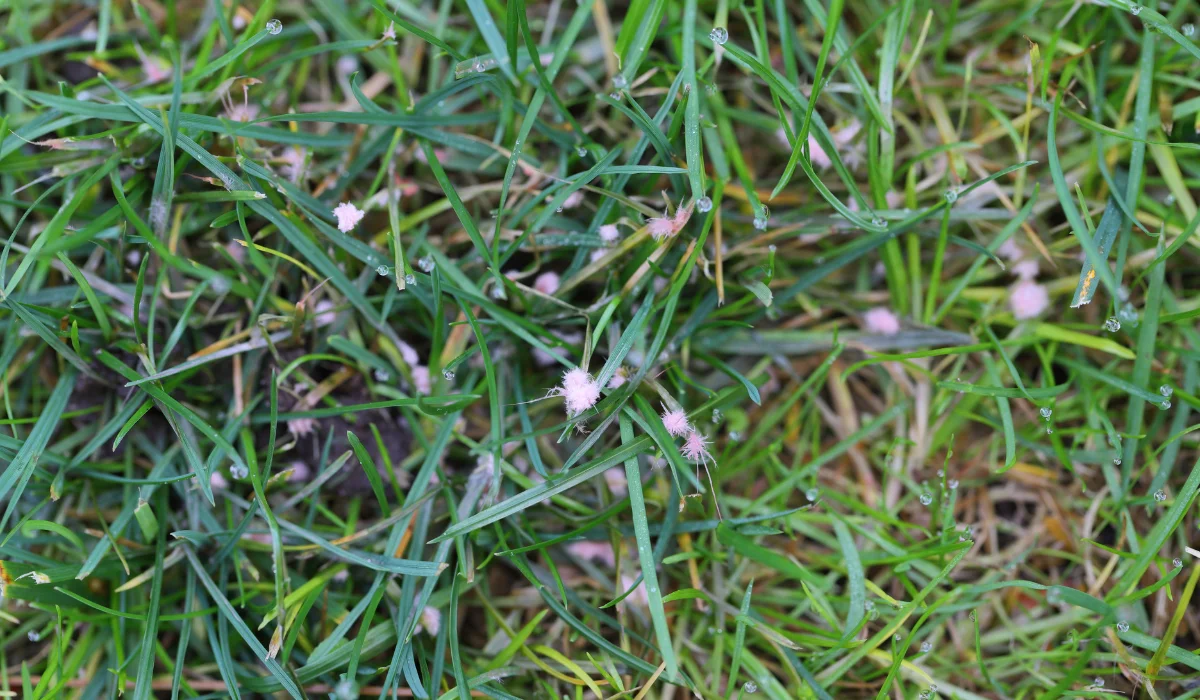
|
Forms reddish-pink threads on the tips of grass blades. |
|
Snow Mold
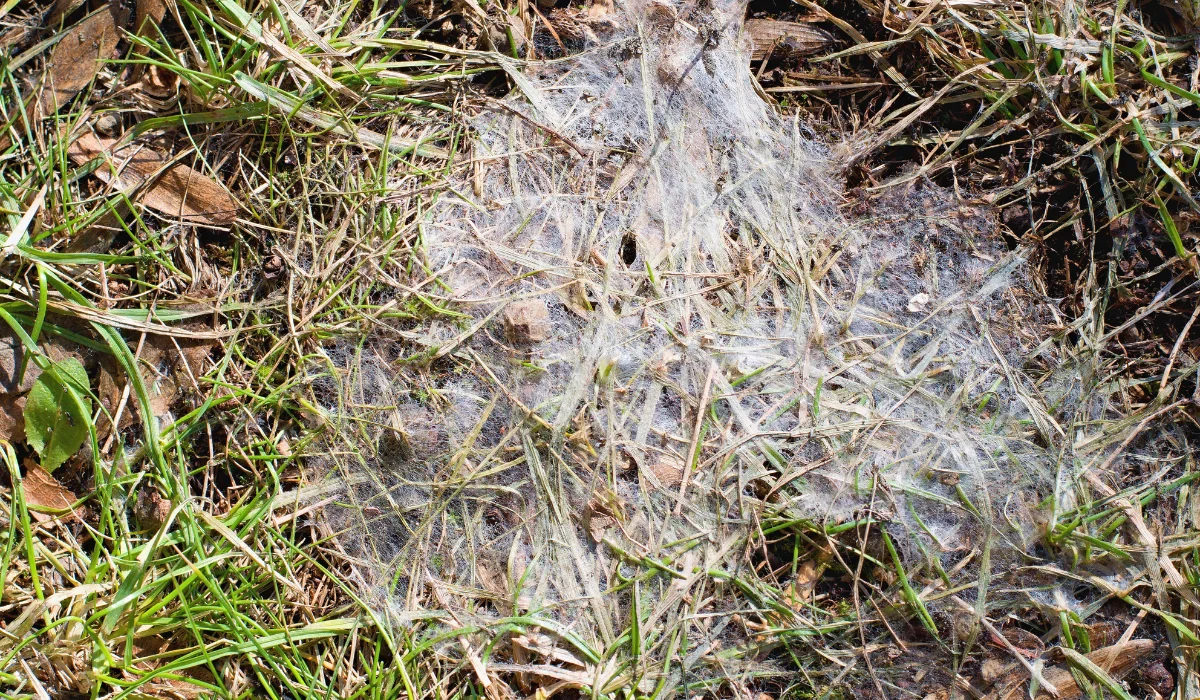
|
Often seen as white or pink spots in cool-season grasses after snow melts. |
|
Fairy Ring
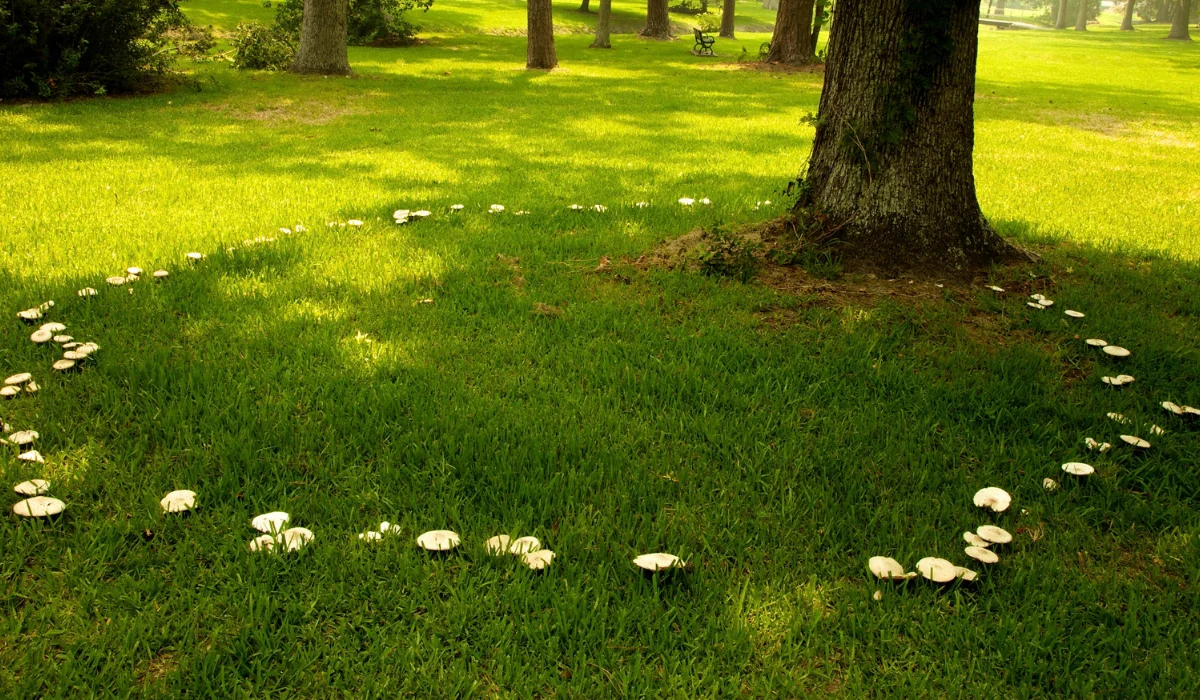
|
Characterized by rings of lush grass or bare spots. |
Examine affected areas for discoloration, dead grass, or circular patches. Identifying the pathogen will help you choose the best lawn fungus treatment.
Tackle the Root Causes of Lawn Fungus
Fungal diseases often show up because of certain conditions in your lawn, but tackling these root causes can stop the problem from coming back.
Start by cutting down on excessive moisture. Overwatering or poor drainage makes it easy for fungus to spread. Instead, water deeply and only when the soil feels dry.
Aerating compacted soil is another big help, as it improves airflow and keeps conditions less friendly for fungus.
Finally, take time to dethatch your lawn by removing the buildup of organic matter sitting between the soil and grass blades.
This gives your lawn room to breathe and makes it harder for fungus to take hold.
Apply Effective Fungus Control Treatments
Once you know which type of fungus is affecting your lawn, it’s time to treat it with the right solution.
If the infection is persistent, a systemic fungicide works well because it targets the disease from within the grass, controlling problems like leaf spots and powdery mildew.
For a natural approach, you can try mixing baking soda with a gallon of water or using neem oil—both are great for mild fungal issues. Broad-spectrum lawn fungicides are another good option since they tackle common lawn diseases.
No matter which treatment you choose, be sure to carefully follow the instructions on the label and repeat applications as needed for the best results.
Revitalize Lawn Care Practices
To protect your lawn from fungus, it’s time to refresh your lawn care routine.
Start with proper mowing—make sure your mower blades are sharp to cut cleanly and avoid mowing wet grass to prevent fungal spores from spreading.
Be smart about fertilizing, too. Over-fertilizing can lead to problems, so test your soil and apply the right fertilizer for your type of grass.
Watering wisely also makes a big difference. Water in the morning so the grass blades have enough time to dry before evening.
If fungus has been a recurring issue, overseed it with fungal-resistant grass seed varieties like tall fescue, bluegrass, or Bermuda grass.
It can give your lawn the strength it needs to stay healthy.
Monitor and Maintain a Healthy Lawn
Treating fungal infections is just the start.
Keep a close watch on affected areas and maintain good lawn care practices to prevent re-infection. Remove grass clippings after mowing, as they can harbor fungal spores and spread lawn disease.
Regular inspections of the environmental conditions for discoloration or brown grasses can help you catch problems early.
Take Control of Lawn Fungus and Keep Your Grass Healthy
Lawn fungus can feel like a daunting problem, but with the right steps, you can restore your lawn to a healthy, green state. By identifying the type of fungus, treating it with targeted solutions, and observing lawn maintenance practices, you’ll create an environment where your turfgrass thrives.
If the problem persists, consider consulting a lawn care expert. While our team at SodLawn can’t go to the site to assist with any fungal issues, we are happy to take phone calls and pictures to do our best to help.
Frequently Asked Questions
Can lawn fungus harm pets or children?
Most lawn fungi are not directly harmful to pets or children, but some can produce spores that cause allergies or skin irritation. Always use pet-safe fungicides and keep children off treated areas until they’re dry.
How long does it take to see results after treating lawn fungus?
Results depend on the severity of the infection and treatment type. Visible improvements usually appear within 1-2 weeks, but full recovery can take longer with consistent care and monitoring.
What types of grass are most resistant to fungus?
Grass varieties like fescue, bermudagrass, and Kentucky bluegrass are more resistant to fungal infections. Choosing these types and maintaining good lawn care practices can reduce the likelihood of fungus problems.

